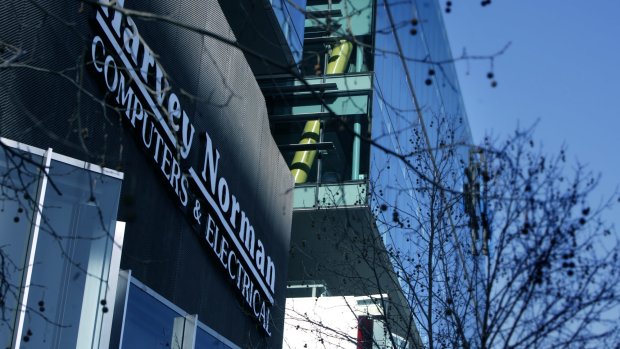..as I told you Jobkeeper is great on paper but it was gross in its implementation- monies given to those who didn't need them. Sounds exactly like what the Trump administration did. Fatten up the Libs business supporters. And those in dire need (who also happens not to be the Liberal base) can go and eke out an existence..who cares right?
..if they brought back Jobkeeper, any company which previously qualified would have a lot of unanswered questions if they are denied this time around ..
..Jobkeeper was great on paper, but failed the people who needed them most.
The real reason JobKeeper isn’t coming back
We may never know which firms got what out of the $90 billion JobKeeper program, unlike our cousins across the ditch.
Michael RoddanSenior companies reporter
Jul 30, 2021 – 1.09pm
God Defend New Zealand, the little island nation whose gold standard implementation of its COVID-19 wage subsidy program helps reveal the stunning inadequacies in the Australian government’s JobKeeper program.
As business calls grow louder for the return of JobKeeper ahead of the military parade soon to be unleashed in Sydney’s western suburbs to enforce compliance with pandemic restrictions, a quick look at the New Zealand Ministry of Social Development’s website provides an insight into why Canberra is so reluctant to revive its $90 billion JobKeeper program.
In NZ anyone can see how much companies received in government relief payments, including Harvey Norman – but not in Australia. Paul Jones
Using NZ’s “COVID-19 wage subsidies – employer search”, anyone is able to find employers that might have received any of the country’s four emergency payments, along with the number of employees for whom the payments were made, the amount paid, and the type of payment.
“Publishing this information makes sure that payments under the scheme are transparent and that the scheme is accountable to the public,” the website says.
Thus, in a few keystrokes, anyone can see that Harvey Norman Stores (NZ) Pty Limited received $12,700,622.40 in wage subsidy for its 1850 employees.
Australia has no such transparency scheme under Treasurer Josh Frydenberg’s program launched last year.
While the ATO knows every business that has applied for JobKeeper by its Australian Business Number and every employee that has been claimed for by Tax File Number, there is no public – or private – register to aggregate recipients.
“Due to the secrecy provisions in the Taxation Administration Act 1953, the ATO cannot provide information on entities that have received JobKeeper payments,” the ATO said in a recent disclosure to a parliamentary inquiry.
What did global companies receive?
What the public knows about the program comes only from the goodwill of companies that provide granular detail of revenues in their financial accounts – public via the ASX or private through the ASIC registry. While the regulator encouraged companies to clearly define whether revenues were influenced by JobKeeper, there was no legal requirement.
Such is the paucity of information that we may never know how much JobKeeper was received by Significant Global Entities – companies, or their subsidiaries, operating in Australia with annual global revenue of $1 billion or more.
A recent disclosure by the Australian Securities and Investments Commission warned: “JobKeeper payments received may not be separately disclosed in a company’s GPFS [general purpose financial statements] if the payments are not material” in terms of global revenue.
Moreover, company accounts for the year ending June 2021 are not in many cases due at the ATO until June 2022. We may never know which firms got what.
Analysis produced for Labor MP Andrew Leigh found $4.6 billion was paid to companies where revenue increased. Elesa Kurtz
A cynic may attribute this opacity as one of the reasons why businesses such as Best & Less are so enthusiastic for a return of JobKeeper 3.0 after its extension last October, rather than the new disaster payment introduced by Treasury that is paid directly to affected Australian workers.
A recent analysis of JobKeeper by the independent Parliamentary Budget Office, which has access to Treasury and ATO data, found that between April and June 2020, $12.5 billion was paid to companies that did not suffer the requisite 15 per cent, 30 per cent or 50 per cent fall in revenue. Logic would extend that to about $25 billion over the program’s full six months.
The analysis, produced for Labor MP Andrew Leigh, found $4.6 billion was paid to 157,650 companies in the same period where revenue actually increased.
Such lavish waste of taxpayer dollars is surprising in retrospect. But this was not news to Treasury.
Indeed, the government knew earlier than July 21, 2020 – when it published a three-month review of the program – that the data showed “15 per cent of JobKeeper recipients experienced an increase in turnover in April 2020 compared with one year previous”.
Yet, the program continued unmolested until October, when Treasury tweaked accessibility to companies that suffered an “actual decline in turnover”, rather than a rubbery forecast fall in sales, which would then give firms access to a lower rate of subsidy.
By mid-2021, the ATO had investigated only 200 matters for possible JobKeeper fraud.
The lack of interest in clamping down on waste is perhaps not the most egregious finding from the Treasury review. Rather, it outlines how only 25 per cent of JobKeeper payments to companies went directly to the pockets of the employees the scheme was designed to support, called an “income transfer”.
“By corollary, around three-quarters of JobKeeper payments constitute a wage subsidy to the employer.” In other words: money paid to a company, ostensibly tied to an employee who may not have received any benefit from the payment.
This was not an incompetent oversight but a design feature of the policy, as “one of the purposes of JobKeeper was to protect businesses that, through no fault of their own, had to cease or wind back their operations”. More money to the company meant the company could plan for the future.
While the ATO is examining “actual decline in turnover” as part of its compliance program, by mid-2021 it had investigated only 200 matters for possible JobKeeper fraud. The AFP’s Serious Financial Crime Taskforce has nine ongoing operations into potentially illegal stimulus payment cases.
While ASX companies have pledged to return a total of about $185 million collected in JobKeeper, the best available information suggests only 47 of the 900,000 companies that received the payment have volunteered to repay the ATO for the subsidy, totalling just $225 million, or 0.25 per cent of the $90 billion program. Due to the extra visibility, about 90 per cent of repayments have been made by public companies.
In the half year through December, 34 of the 66 ASX300 companies that received $284 million in JobKeeper reported an increase in underlying earnings from pre-pandemic levels.
New Zealand’s $12.4 billion program had received repayments worth $670 million – or about 5 per cent of the scheme. If Australia enjoyed the same rate of repayment, $5 billion would have been returned.
Given Australia’s spot at the bottom of the vaccination league tables, it’s money that could sure be put to better use now.
- Forums
- ASX - General
- Its Over
..as I told you Jobkeeper is great on paper but it was gross in...
- There are more pages in this discussion • 11,725 more messages in this thread...
You’re viewing a single post only. To view the entire thread just sign in or Join Now (FREE)






